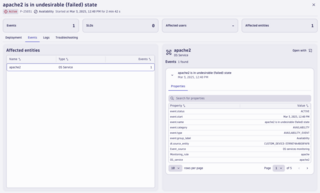OS Services Alerting Options
Depending on your monitoring requirements, you can choose between basic or advanced alerting for OS services.
- Discovery mode: Supports only basic alerting.
- Full-Stack & Infrastructure monitoring modes: Support both basic and advanced alerting.
Basic Alerting
- Provides insight into service status.
- Monitors an OS service’s current state.
- Triggers an alert when the service changes from running to failed.
Advanced Alerting
- Provides access to service status and availability metrics.
- Tracks service availability per minute for more detailed insights.
- Enables complex alerting logic, such as notifying if a service remains stopped for more than 10 minutes.
- Allows creation of custom alerting rules to trigger alerts based on service availability.



